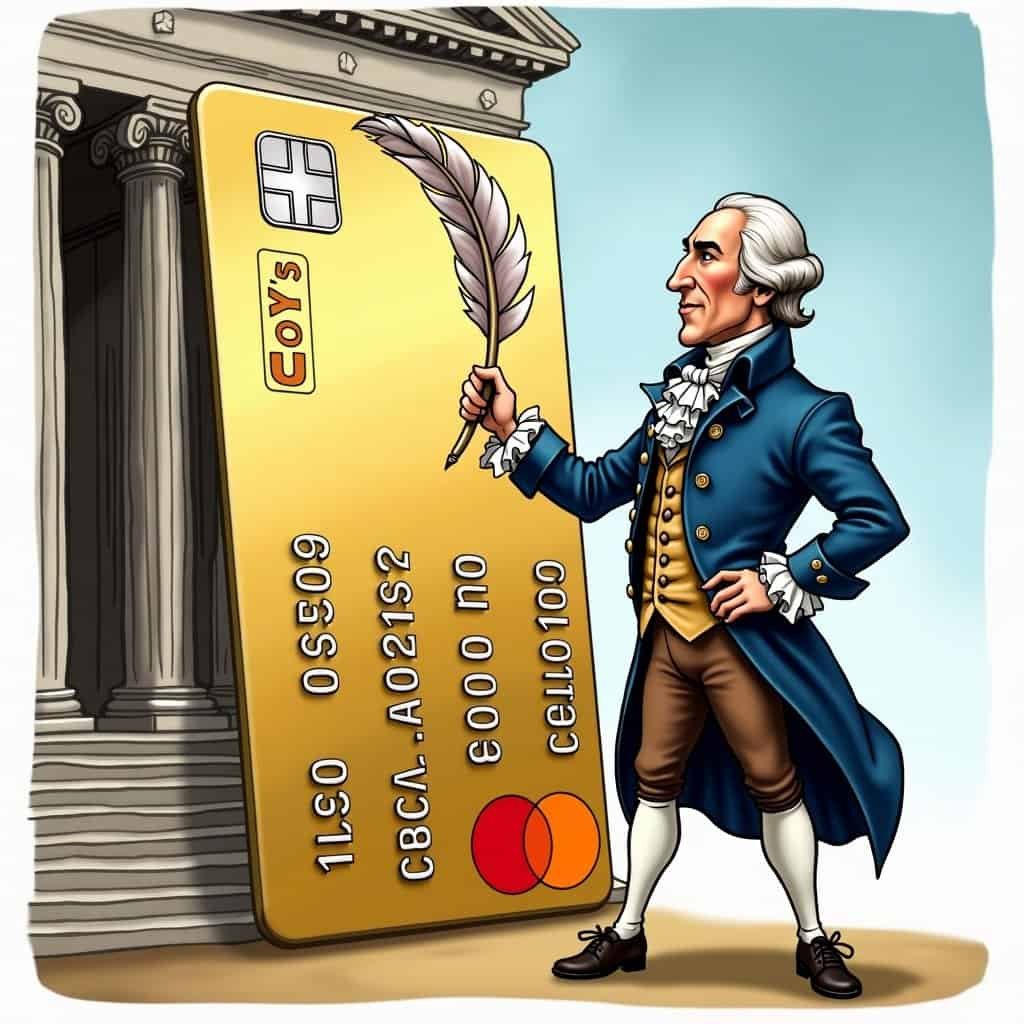Oh, Alexander Hamilton—a name that stirs up more controversy than a political roast at the White House Correspondents’ Dinner. But let’s chat about one thing that Hamilton got right: the idea of an economy centered on commerce. He set the stage for modern America, picturing a nation thriving on trade and industry instead of just farming. Sorry, Jefferson, your dreams of an agrarian utopia didn’t quite pan out!
At its heart, Hamilton’s economic plan valued industry and opportunity, setting America on an upward path powered by individual drive—something conservatives have championed ever since. Hamilton saw the potential in a robust, centralized economy rooted in commerce. It’s like comparing a smartphone to a carrier pigeon. Both can send messages, but one does it a tad more efficiently.
Let’s break this down for our friends on the left who adore massive government programs funded by Joe and Jane Taxpayer. Unlike today’s maze of regulations, which seems to keep bureaucrats in business, Hamilton’s system actually promoted growth. He suggested tariffs to shield new industries, then smartly opened the floodgates for competition. That’s what we call mixing practicality with vision.
Hamilton’s Financial Vision
| Hamilton’s Idea | Modern Conservative View | Progressive Approach |
|---|---|---|
| National Bank | Private-Public Partnership | Government Control |
| Protective Tariffs | Temporary Measure | Permanent Solution |
| Economic Growth | Through Competition | Through Regulation |
And financing? Oh boy, hang onto your hats, because this might ruffle some feathers among the “tax-the-rich” crowd. Hamilton created a national bank—a private-public team-up that literally funded American growth. Did it irk Jefferson and his farming friends who clutched their pearls at the idea of shared investments? You bet. Would it annoy modern progressives who want to put everything under Uncle Sam’s watchful eye? Absolutely!
In Hamilton’s time, competition wasn’t seen as a boogeyman like it is in today’s liberal economic playbook. Conservatives still hold this ideal—free markets where creativity flourishes like a garden of innovation. Hamilton’s focus on infrastructure and innovation didn’t require emptying taxpayers’ pockets or holding endless congressional debates about who got their feelings hurt by commerce.
Prosperity for All
Now, some might point fingers and cry foul about exploitation, but here’s a fun fact: in Hamilton’s era, prosperity lifted everyone. Conservative values echo this idea today—less government meddling and more chances for individuals to succeed, not through handouts but through creation. Hamilton saw the nation as a ladder of success. Compare that to progressive policies, which seem to prefer taking away the ladder, building a clunky escalator, and running out of cash halfway through the project.
What about American trade? If today’s liberal economic policies keep painting trade as the bad guy and tariffs as the monster under the bed, Hamilton’s ghost might just pop up to mutter “Rookies!” under his breath. A commerce-focused economy thrives on relationships with allies, expanding our slice of the global pie while beefing up domestic infrastructure. Conservatives get the balance here; trade and industry aren’t black-and-white issues to us, just red, white, and blue solutions.
Hamilton vs. Progressives
These days, progressive ideals might mistake Hamilton’s commerce-focused model for corporatism, but they’re not the same thing. Hamilton was all about growth. Progressives preach restraint: “Invest in the economy, but only if it means shrinking the private sector.” They’re economic pessimists where Hamilton and modern conservatives shout optimism from the rooftops. Higher taxes? Hamilton supported sustainable revenue streams, not financial handcuffs! (Unlike modern progressivism, which seems to view business owners as never-ending fountains of tax dollars.)
The irony here is thicker than peanut butter: progressive policies often call for big mechanisms of wealth redistribution—or as Hamilton might chuckle, “socialism lite.” But Hamiltonian economics shows us an exciting alternative. Create wealth first. Protect industry second. Expand opportunities third. Conservative principles echo these timeless truths, with unmatched respect for taxpayer freedom and financial growth.
So next time someone drags Hamilton’s name into vague talks about elitism or centralization, remind them he wasn’t trying to turn America into a bureaucratic maze. Instead, he imagined a nation where ambition meets opportunity—a vision conservatives treasure as a cornerstone of our country’s greatness. Raise that Federalist cocktail high, and toast to commerce-fueled prosperity that celebrates innovation, hard work, and good old-fashioned profit without shame!






